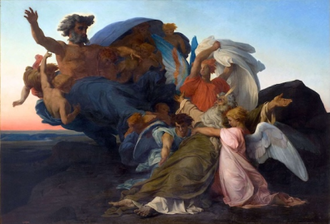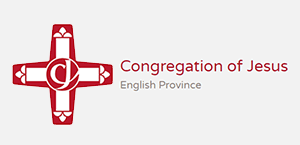Gospel in Art: There is one who accuses you: Moses

The Death of Moses, painting by Alexandre Cabanel, 1850 © Musée Fabre, Montpellier, France
Source: Christian Art
Gospel of 3 April 2025
At that time: Jesus said to the Jews: 'If I alone bear witness about myself, my testimony is not true. There is another who bears witness about me, and I know that the testimony that he bears about me is true. You sent to John, and he has borne witness to the truth. Not that the testimony that I receive is from man, but I say these things so that you may be saved. He was a burning and shining lamp, and you were willing to rejoice for a while in his light. But the testimony that I have is greater than that of John. For the works that the Father has given me to accomplish, the very works that I am doing, bear witness about me that the Father has sent me. And the Father who sent me has himself borne witness about me. His voice you have never heard, his form you have never seen, and you do not have his word abiding in you, for you do not believe the one whom he has sent. You search the Scriptures because you think that in them you have eternal life; and it is they that bear witness about me, yet you refuse to come to me that you may have life. I do not receive glory from people. But I know that you do not have the love of God within you.
I have come in my Father's name, and you do not receive me. If another comes in his own name, you will receive him. How can you believe, when you receive glory from one another and do not seek the glory that comes from the only God? Do not think that I will accuse you to the Father. There is one who accuses you: Moses, on whom you have set your hope. For if you believed Moses, you would believe me; for he wrote of me. But if you do not believe his writings, how will you believe my words?'
Reflection on the painting
Today's Gospel reading is not one of the easiest to understand. What does Jesus mean when He says, 'There is one who accuses you: Moses, on whom you have set your hope.' Here, Jesus is directly addressing a group of Jews who wanted to kill him. He is making the point that, one day, Moses himself would stand as their accuser before the Father, because they refused to believe that Jesus was the one Moses had written about-the promised Messiah. Jesus was confronting their unbelief.
Our featured painting from 1851, The Death of Moses, is remarkable not only for its subject but also for its sheer scale, measuring 280 cm by 390 cm (9 ft tall and almost 13 ft wide). The artist, Alexandre Cabanel, was only 28 years old when he undertook this ambitious work. He found both the theme and the size of the canvas to be a great challenge. In a letter to his brother, he wrote: "I have imposed upon myself a large, very difficult, formidable task, since I seek to represent the image of the Eternal Master of the sky and the earth-to represent God-and next to Him, one of His most sublime creatures, Moses, deified in some way by His contact."
In the painting, God is depicted on the left, held aloft by cherubs and draped in a flowing blue cloak. Moses, surrounded by angels, is dying in the presence of God while gazing upon the Promised Land, a land he would never enter. The composition is strikingly dramatic, with a bold diagonal structure. Cabanel's rendering of God, particularly in the flowing drapery and muscular form, is clearly inspired by Michelangelo's depiction of God on the Sistine Chapel ceiling.
The group of Jews whom Jesus was addressing knew the Scriptures inside out, yet they failed to believe in Moses' prophetic words about the Messiah. Their knowledge did not translate into faith, and so they remained blind to the truth that Jesus was the fulfilment of God's promise. Moses delivered the law, but Jesus delivers the promise!
LINKS
Gospel in Art: https://christian.art/
Today's Reflection: https://christian.art/daily-gospel-reading/john-5-31-47-2025/ (with audio)


















